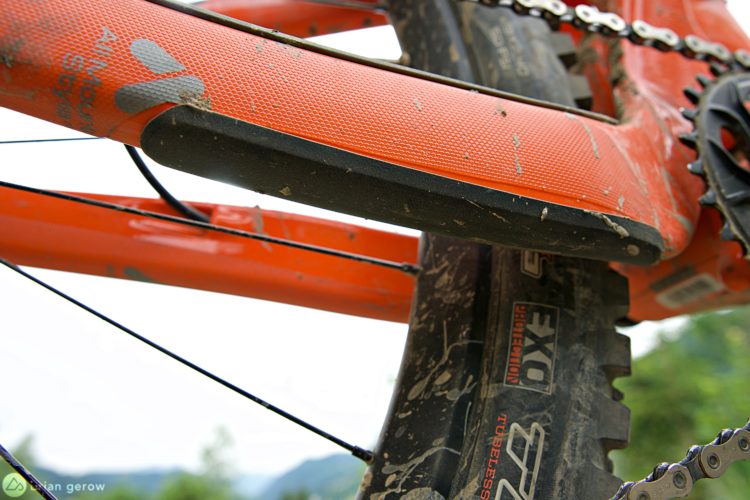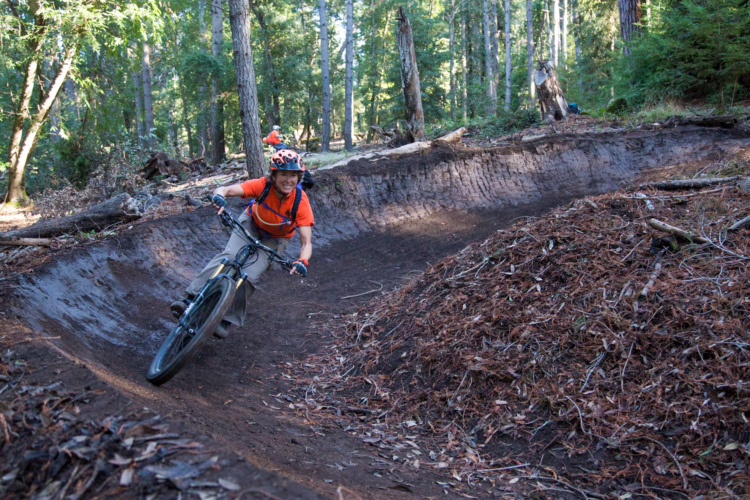The Quick Question series answers your MTB repair questions. Do you have a quick question about mountain bike repair? 🤔 Email [email protected] and we’ll do our best to answer it!
As a kid, I recall one of my classmates saying that they like to leave new Chuck Taylor sneakers just across the house threshold where everyone will step on them. That way the glowing new look wears off faster and they can go about life without glowing feet. Should we similarly pitch our new bikes off a dusty embankment to get past the initial shiny-and-unscathed moment?
Bike frames collect scratches. It’s an inescapable part of the sport, and a lot of folks accept that their bike will only look shiny and new for the first ride. That is unless your frame has a raw alloy or titanium finish that can be buffed back to its original luster. Some of my Italian friends go to great lengths to protect their paint, keeping it as clean as possible to maintain resale value. Here in the US folks seem a little less concerned with scratches, and most used bikes show their wear quite loudly.
An ounce of prevention

There are a few options that will help keep your bike’s finish as scratch-free as possible. The first move is to add some form of frame protection that covers the finish, keeping it from touching the sticks and stones that mean to add their own designs. Some frame protection comes in a kit to precisely fit over your entire frame, whereas other companies cut more generic swatches to protect the most vulnerable paint. A few of those brands include All Mountain Style, DHaRCO, Dyed Bro, Ground Keeper, InvisiFRAME, Lizard Skins, and Ride Wrap. You can also buy a roll of heli-tape or bike-specific tape and tailor the cuts yourself. The theory backing all of these products is the same: create a barrier between the frame finish and the forest to prevent scratches, and then remove the protection before selling the bike. With the shops I’ve worked at that second removal step hasn’t been as popular, and a lot of riders opt to leave the scathed protection intact for the next person.
Some frame abrasions come not from the trees or their detritus but from the bike’s components themselves. There’s a never-ending list of products intended to hold cables and hoses in place or to cover them in a soft material that won’t mar the marvelous luster. Chainstay and downtube padding also help mitigate scratches, as do bits like Trek’s Knock Block or the steering-stops on DH bikes that stop the stanchions from hitting the frame. It’s argued that internal cable routing will also help keep the paint clean, as the ports can be positioned to prevent vibration and scratches.
Possibly the most common crashless way for frames to be blemished is by strapping a bikepacking bag to them. The tough straps of touring bags and panniers will eat right through the paint, leaving the bare metal to rust and deteriorate. Many of us use steel frames for bikepacking since the material feels quite good on long endurance rides. Keeping steel tubes properly painted will prevent rust and help the frame last longer. I like to add heli-tape where the bag straps wrap my frame to prevent the otherwise inevitable sanding. Otherwise, a little dirt lodged beneath the straps will eat down to the metal no matter how soft the strap material is.
Lashing your bike to a vehicle rack can also eat through the paint rather quickly if done incorrectly. When shopping for a rack it can be best to look for one that doesn’t touch the frame whatsoever, only holding it by the tires. If you have to stack bikes inside the car, a set of moving blankets or a painter’s drop cloth can help prevent the paint from rubbing thin as they snuggle.

A pound of cure: Frame scratch repair
Like any finished surface, you can use touch-up paint to repair your scratched frame. Your new frame may have come with a tiny bottle of touch up paint for a perfect match. If not, touch up paint for some of the more popular brands can be purchased, like these Yeti colors at JensonUSA. This bike frame paint kit on Amazon — that supposedly lets you mix and match colors yourself — gets mixed reviews. There are also online services like this one for Santa Cruz and Juliana bikes that can help you choose and order just the right paint color for your mountain bike frame.
You can even drop your bike off at a frame painter or auto body shop and let them do it. This downstream route can cost a pile of cash, and the DIY jobs we’ve seen often look worse than the scratches.
You could also cover scratches with a solid-colored frame protection kit if the objective is simply to make them disappear.
The less expensive option is to appreciate them. Like the scar lines on your body, those scratches can remind you of times when you pushed the limit and maybe learned something — or could have.
Do you have any tips for repairing frame scratches or matching paint colors? Please share them in the comments!
























3 Comments
Apr 21, 2022
Jan 11, 2025
Apr 22, 2022
The battle scars are going to happen eventually, c'est la vie! That part is reason to work on skills. Annnnnnd, practice is a favorite pastime that my bike and I enjoy immensely.
By the way, Gerow has been declared AWOL...